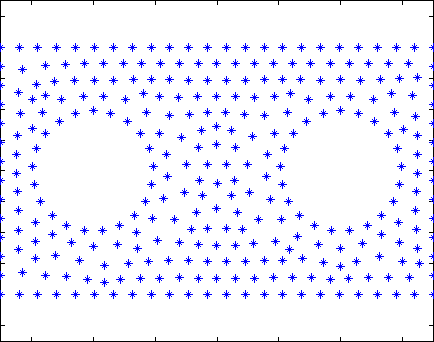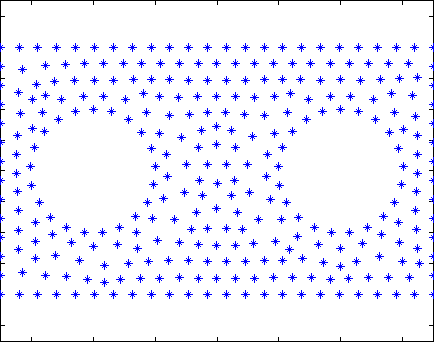 |
To investigate the influence of interaction between two voids, we first studied the case without interaction.
In this case, the interaction between two voids is ignored. The voids evolve toward a state where the surface energy can be minimized. In this scenario, the volume of the voids keeps shrinking and the mass is not conserved.
As there is no interaction between the two voids, the distribution of strain energy is axis-symmetric around each void. Therefore, the velocity and displacement are also axis-symmetric. Thus, there is no shape change during the whole process, and the two voids maintains circular.

When the interaction presents, the distribution of strain energy around one void is influenced by the other one. In this case, the distribution of velocity and displacement is not axisymetric any more. As we can see from the figure above, the two voids become elliptical finally.
In fact, when more than two voids present, the strain energy distribution will be even more complicated, and the shape evolution will also be more interesting. We also expect the mesh might be updated after each step of simulation in future work. Besides, to improve stabability of the simulation, step time might be adjusted dynamically. For example, a initial time step might be set, then it can be reduced automatically once the simulation cannot converge.


